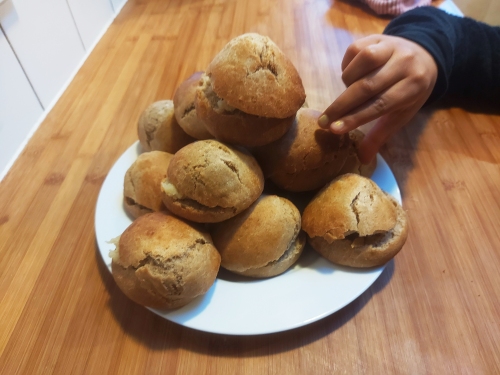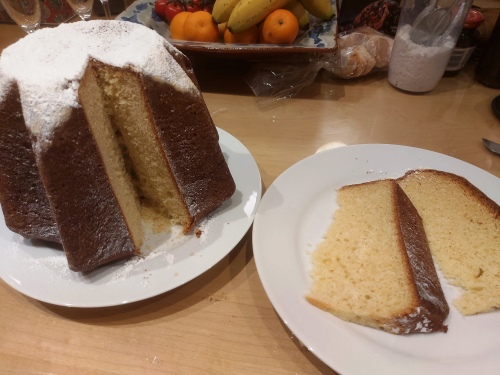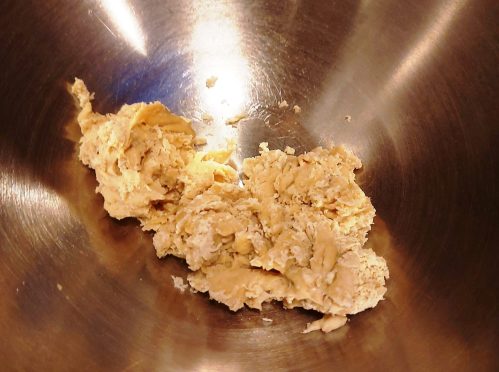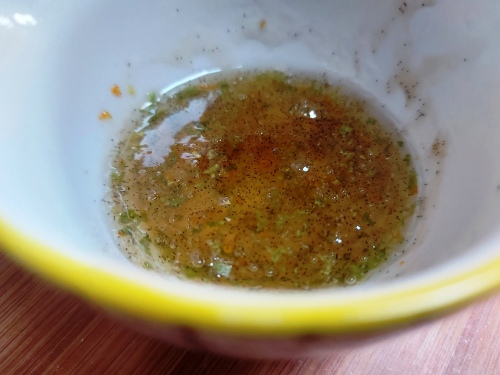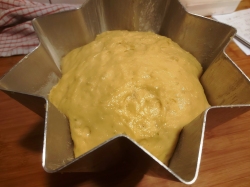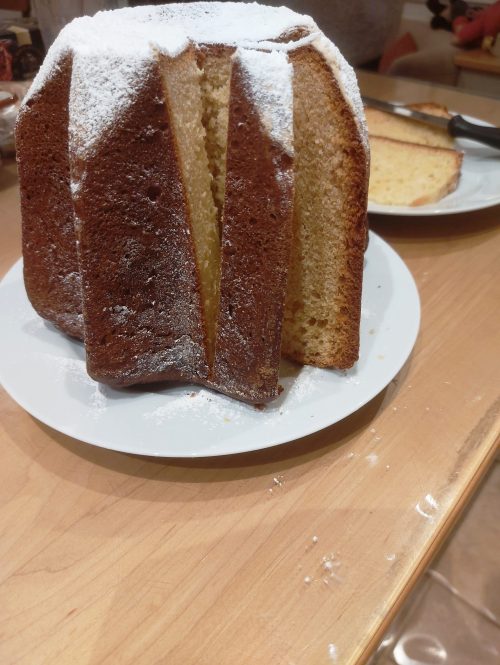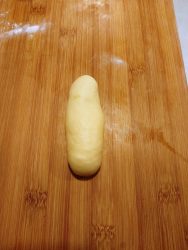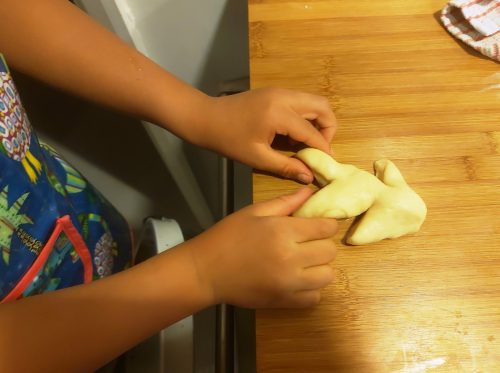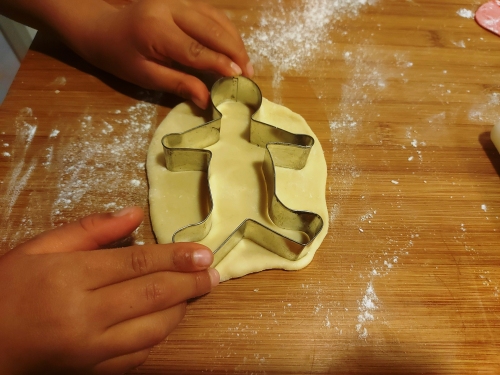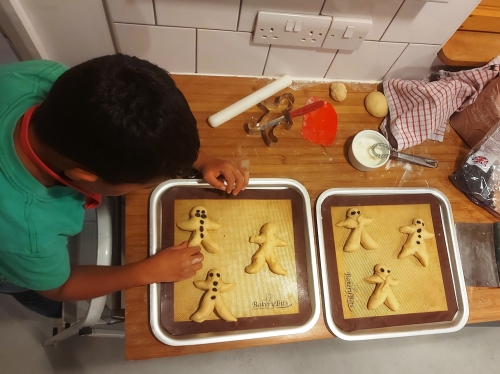Pancakes are all well and good, but there are other Shrove Tuesday foods in British tradition. Apparently. I was pleased to spot these in the book Cakes Regional and Traditional by Julie Duff.
They’re just my kind of thing – a yeasted sweet bun, with some spice and one of my favourite ingredients, ground almonds. You also slice them in half, remove some of the crumb, and mix that with cream, sugar and more ground almonds, using that as a filling. As such they’re a British cousin to Scandinavian semlor / semla or fastelavnsbolle or bollugadur (the Icelandic variation). I wonder what the historic connections are? Something to do with the Viking diaspora? One day I might learn how to be a proper food historian, though that would require being able to go to big libraries and re-learn how to research academically, something my childcare responsibilities preclude still. Never mind the plague dragging on. (It’s finally arrived in our house after two years of lucky dodges.)
Anyway, here’s a version of Duff’s recipe. One key fault with her original is the lack of a final prove. I left mine a little, but should have left them a lot longer – you can see they weren’t proved enough with all the cracking on the tops.
It is an amusingly old-fashioned recipe for these sourdough days. The book was published in 2003, but is still a real treasure trove. Even if many of the recipes used that trick of rushing the yeast at the start with the addition of a bit of sugar.
Dough
15g fresh yeast or 7g active dried yeast
5g caster sugar
75g tepid water
360g plain flour
6g mixed spice
50g caster sugar
50g ground almonds
2 medium eggs, lightly beaten. That is, about 110g beaten egg
140g whole milk, warmed slightly
Filling
75g single cream
115g ground almonds
50g caster sugar
Makes 12
1. Combine the yeast, 5g sugar and 75g water in a bowl and leave to activate and froth up.
2. In a large bowl, sieve together the flour and spice, then mix in the caster sugar and ground almonds.
3. Add the yeast mix, beaten egg and milk to the dry mix and bring to a dough.
4. Knead until smooth. It’s quite a sticky dough, so add a little more flour to make it more manageable, but not too much. Using the Dan Lepard method makes it easier – short knead, 10 minute rest, short knead, 10 minute rest, short knead, 10 minute rest. Final knead.
5. Form a ball and put in a clean, lightly oiled bowl. Cover and leave to prove until doubled in size. This will take a few hours, and will depend on the temperature. My heating has been broken, so it was a bit slow. (I don’t have a prover, proving drawer or airing cupboard.)
6. Weigh the dough. Mine was about 850g. Divide it into 12 pieces weighing about 70g each.
7. Roll these into smooth balls, then place on a baking sheet lined with parchment or silicon mats.
8. Cover again and leave to prove until doubled in size.
9. Preheat oven to 180C.
10. Glaze the buns with a little milk.
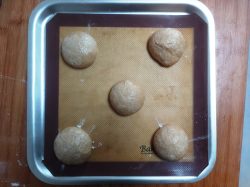
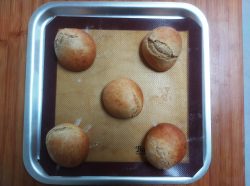
11. Bake for about 20 minutes, checking they’re not browning too much.
12. Cool completely on a wire rack.
13. While they’re cooling, make the filling by combining the cream, ground almonds and sugar.

14. When the buns are cool, split them in two, scoop a little of the crumb out (I find a grapefruit spoon useful for this), then crumble this into filling.
15. Spoon a blob of the filling back into the buns, sandwich them and serve.
Enjoy. Instead of pancakes. Or just before. To really be greedy on Shrove Tuesday even if you’ve no intention – or indeed concept – of fasting for Lent.

